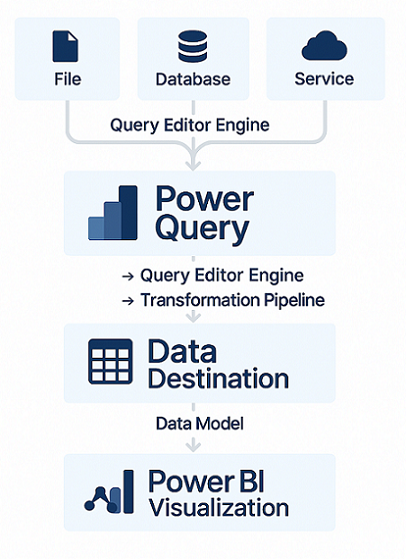Power Query is a data extraction and transformation tool built into Power BI, Excel, and other Microsoft products. It simplifies the process of importing, cleaning, transforming, and reshaping data from multiple sources without needing complex code. Its significance lies in empowering business users to perform ETL (Extract, Transform, Load) operations easily and visually.
Power Query Architecture Overview:

- The architecture begins with the Data Source Layer, which connects to a wide range of sources such as Excel files, databases, websites, and cloud services.
- Next, the Query Editor Engine takes over, allowing users to apply transformations through an intuitive user interface or by writing M language scripts.
- The Transformation Pipeline sequentially processes the data—shaping, cleaning, and enriching it using applied steps recorded in the editor.
- Once transformed, the data flows into the Data Model Layer, where it is loaded into Power BI for visualization, analysis, and reporting.
- This layered architecture supports automated, repeatable, and refreshable workflows, ensuring data integrity and significantly reducing manual effort.
Key Data Transformations Performed by Power Query:
- Remove Columns
- Keep Columns
- Remove Rows
- Keep Rows
- Split Column
- Replace Values
- Data Type
- Transform
- Move
- Sort
- Rename
- Group By
- Fill
- Pivot Column
- Unpivot Columns
- Merge Columns
- Extract
- Format
- Remove Rows/Columns
- Filtering Data
- Column Splitting
- Sorting and Grouping
- Conditional Formatting
- Pivoting and Unpivoting